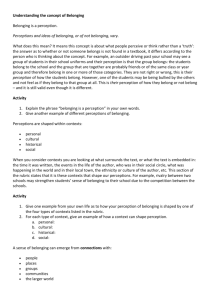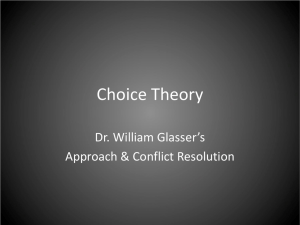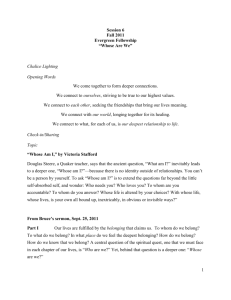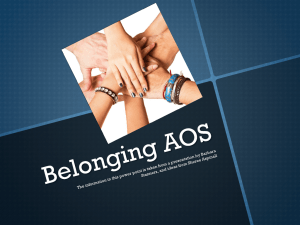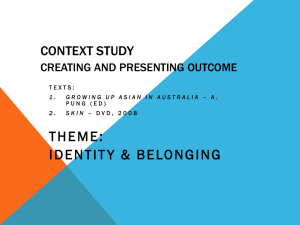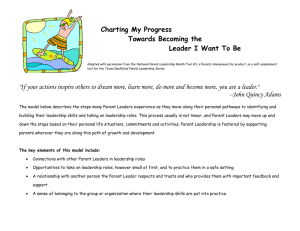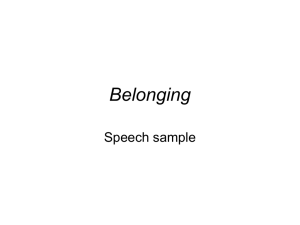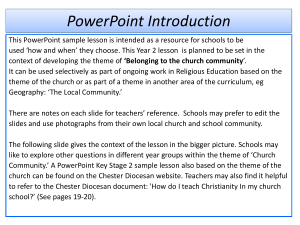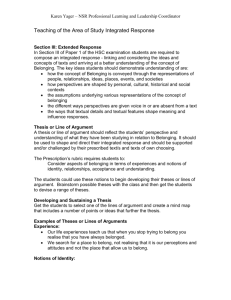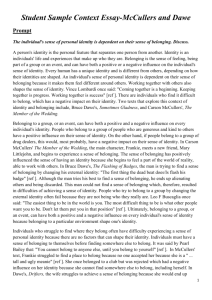File
advertisement
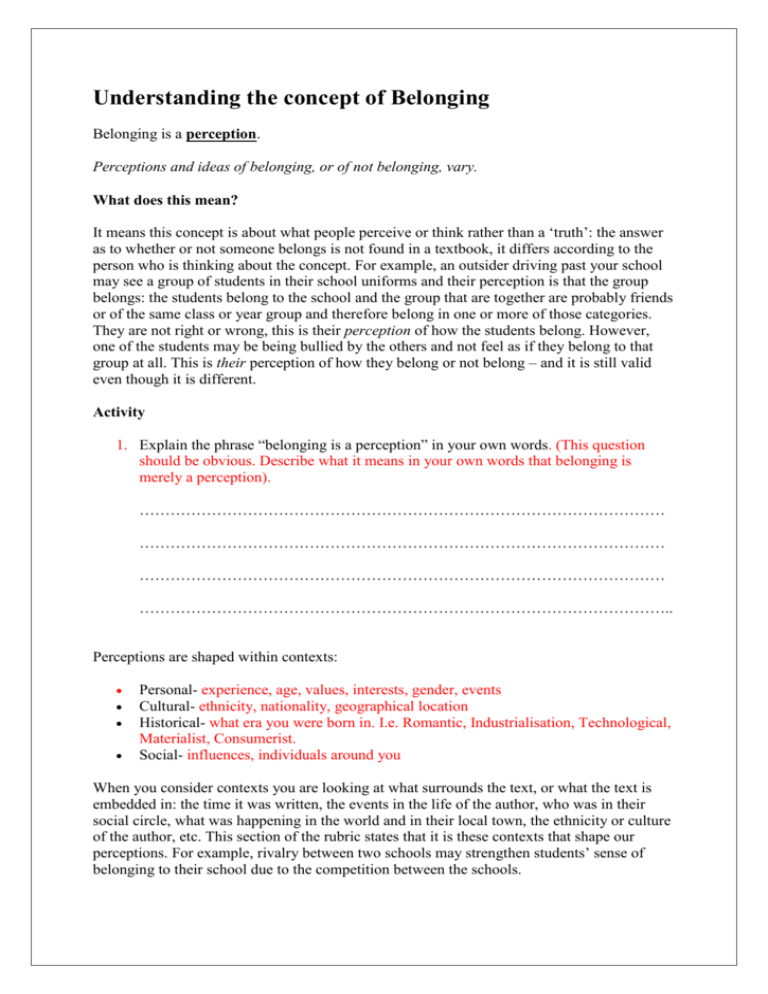
Understanding the concept of Belonging Belonging is a perception. Perceptions and ideas of belonging, or of not belonging, vary. What does this mean? It means this concept is about what people perceive or think rather than a ‘truth’: the answer as to whether or not someone belongs is not found in a textbook, it differs according to the person who is thinking about the concept. For example, an outsider driving past your school may see a group of students in their school uniforms and their perception is that the group belongs: the students belong to the school and the group that are together are probably friends or of the same class or year group and therefore belong in one or more of those categories. They are not right or wrong, this is their perception of how the students belong. However, one of the students may be being bullied by the others and not feel as if they belong to that group at all. This is their perception of how they belong or not belong – and it is still valid even though it is different. Activity 1. Explain the phrase “belonging is a perception” in your own words. (This question should be obvious. Describe what it means in your own words that belonging is merely a perception). ………………………………………………………………………………………… ………………………………………………………………………………………… ………………………………………………………………………………………… ………………………………………………………………………………………….. Perceptions are shaped within contexts: Personal- experience, age, values, interests, gender, events Cultural- ethnicity, nationality, geographical location Historical- what era you were born in. I.e. Romantic, Industrialisation, Technological, Materialist, Consumerist. Social- influences, individuals around you When you consider contexts you are looking at what surrounds the text, or what the text is embedded in: the time it was written, the events in the life of the author, who was in their social circle, what was happening in the world and in their local town, the ethnicity or culture of the author, etc. This section of the rubric states that it is these contexts that shape our perceptions. For example, rivalry between two schools may strengthen students’ sense of belonging to their school due to the competition between the schools. Activity 1. Give one example from your own life as to how your perception of belonging is shaped by one of the four types of contexts listed in the rubric. My perceptions of belonging are shaped by my cultural context. Being born as an Asian in Australia has affected my sense of belonging. I have been a victim of racist attitudes and remarks from those around me which make me feel excluded at times. However, integrated within me are both Australian and Asian values which I believe fulfil me as a person. I like having a mixture of both because it balances me. I like the unrestricted freedom of speech, promoted in Australian culture but I like that Asians value hard work and education. Being from both cultures have allowed me to belong, and at times, not belong also. ………………………………………………………………………………………… ………………………………………………………………………………………… ………………………………………………………………………………………… ………………………………………………………………………………………… ………………………………………………………………………………………… …………………………………………………………………………………………. 2. For each type of context, give an example of how a context can shape perception. I will give you an example for the first one and you guys need to do the rest. I’ve given you some examples on the previous page. a. Personal: An individual’s experience can shape their perceptions as people generally learn from past experiences and try to right the things that they have done wrong. Our age also shapes our perceptions of belonging because as we grow and develop, we learn more and our attitudes towards belonging can be modified over time. A person’s gender can also shape belonging because scientifically speaking, males and females tend to have different interests and values. Though stereotypical, women may tend to have more nurturing tendencies than males. b. c. cultural: d. historical: e. social: A sense of belonging can emerge from connections with: people places groups communities the larger world Each person has a number of connections in their life: school, home, work, sport, performing arts, family, friends, local town, region, country, etc. This section of the rubric suggests that our sense of belonging can come from these connections. Activity 1. For each of the categories stated in the rubric, identify one example from your own life and explain how it affects your sense of belonging. a. people: b. places: c. groups: d. communities: One community which I belong to is my school community. As a teacher at Castle Hill High School, I feel a sense of pride in my school community. Teaching the students and collaborating with teachers adds to this sense of belonging. e. the larger world:
